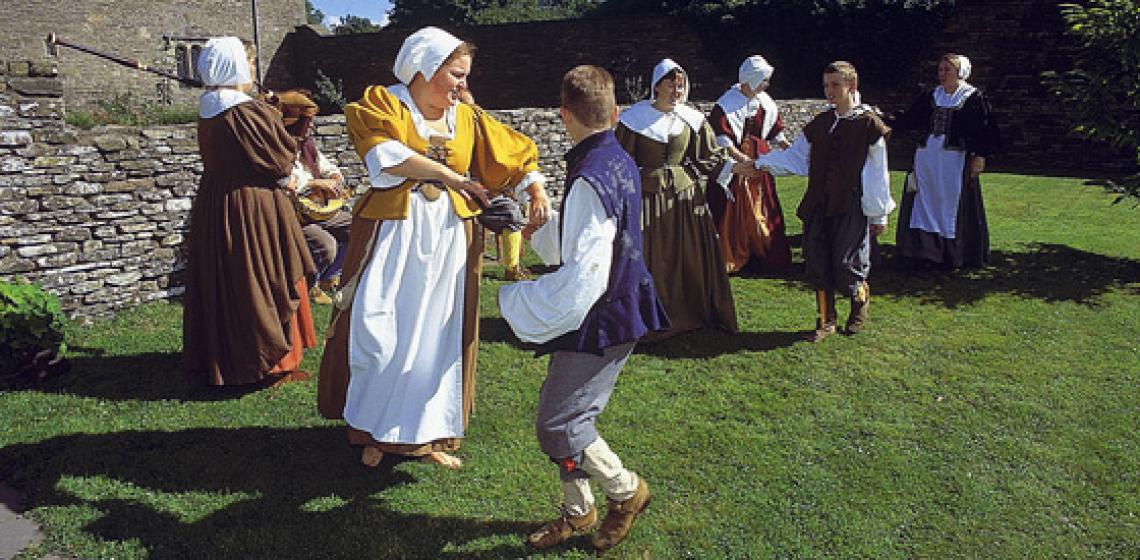
Visitor’s today step into the Manor House restored and furnished as it would have been in 1645. All the furnishings in the rooms are accurate reproductions of items from the time of the Prichard’s in the 16th and 17th centuries and many of the originals can be found in the Museum of Welsh Life at St. Fagans. As you move around the house you will meet historical interpreters playing the part of the Pritchards’ 17th century servants. The servants will talk about their individual roles, and the varied and interesting life of the Pritchard family.
The building you see now was built in c1550 for Dafydd ap Richard. The Manor was designed to be easily defended during the turbulent reigns of Tudor kings and queens and is one of the finest examples of a semi-fortified gentry house in Wales today.
The original defensive design incorporated a single entrance, four-foot thick walls enclosing spiral stone staircases for access between floors and stout wooden doors. When these were securely closed they split the Manor in two and ensured that the inner east wing provided a safe and secure place of refuge during troubled times.
By the beginning of the Stuart dynasty the Prichard family had prospered and the house was extended in 1628 to demonstrate their status. The Grand Staircase now allowed easy access between floors and two of the rooms used by the family were panelled in oak.
When Civil War broke out between King and Parliament in 1642 Colonel Edward Prichard was appointed Commissioner of Array to the King, raising men and money for the Royalist cause in Glamorganshire.
By the middle of 1645 support was waning and shortly after his defeat at the battle of Naseby King Charles I came on a rallying tour through South Wales and visited Llancaiach Fawr for lunch on 5th August. Unimpressed by the King’s entreaties, shortly afterwards the Prichard’s and many other Glamorgan gentry changed sides to support Parliament and Colonel Prichard subsequently defended Cardiff Castle against the Royalists.
Post 17th Century, Llancaiach Fawr had become a working farm, and any visible signs of the Gardens had long since disappeared. The Council therefore originally planted the gardens on the basis of similar 17th Century properties. It was later decided to add certain elements that might have been in any sixteenth or seventeenth century garden such as the Pond, Shady Walk and Knot garden etc. Thanks to the efforts of the “Friends of Llancaiach”, who provided the funds and some physical help alongside our staff, these areas were soon developed, along with the Orchard, Physic, Privy and Vegetable gardens, whilst still retaining the original layout in the Formal area at the front of the Manor.
As much as possible we try to grow the sort of plants that would have been grown in a garden of the period of the Manor. The orchard contains varieties of apples that are now rarely found such as “ Decio”, “Paradise”, and “Catshead” among others. Plants are grown in the Physic garden that would have been used for cures, household use and perfumes etc.
Whilst our gardens are continually developing, we hope that they retain some of the charm of the early gardens and that our visitors might gain a hint of what might have been enjoyed by earlier generations who took such great pleasure and made such good use of this pleasant space.
